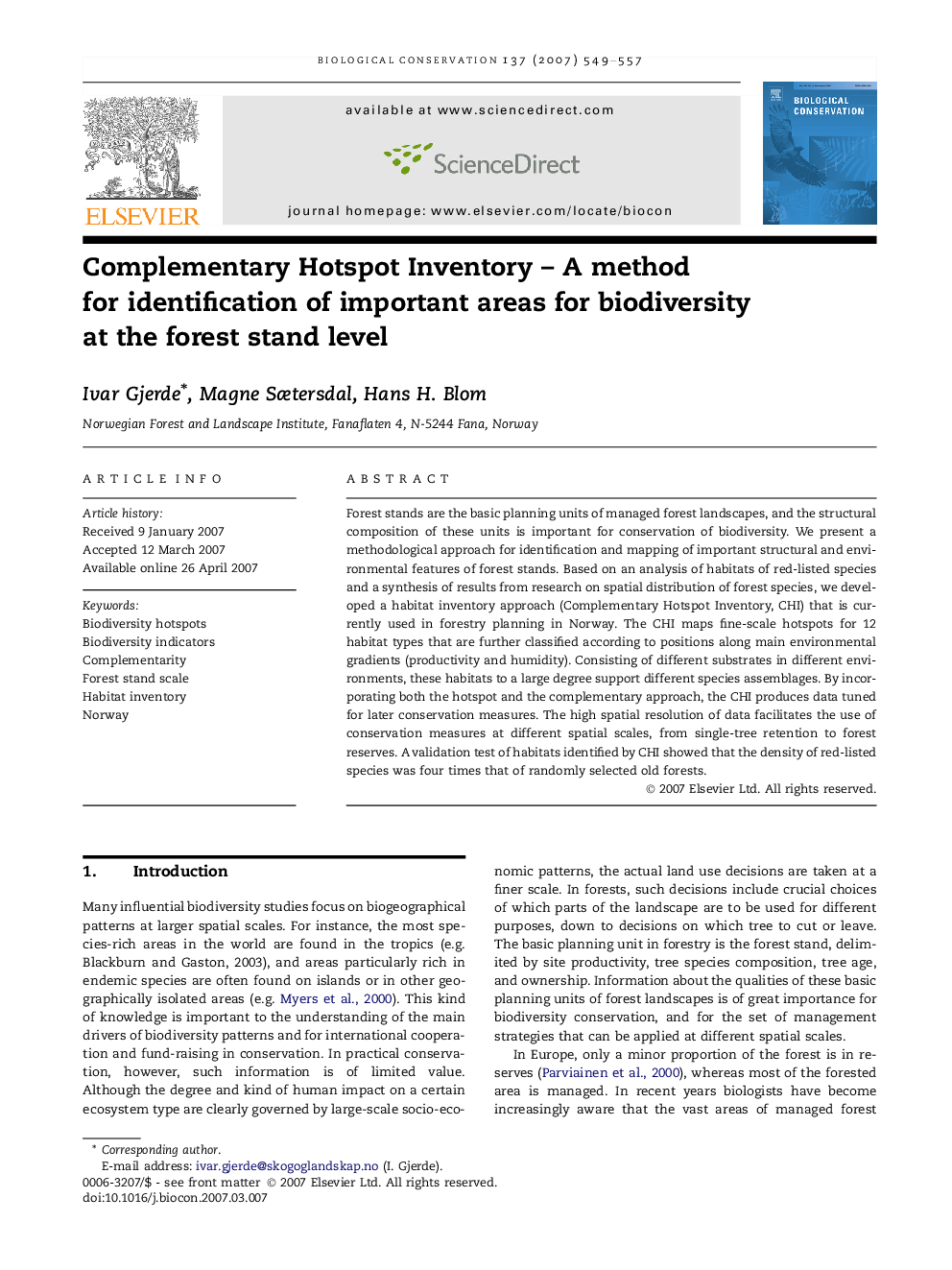| Article ID | Journal | Published Year | Pages | File Type |
|---|---|---|---|---|
| 4387080 | Biological Conservation | 2007 | 9 Pages |
Abstract
Forest stands are the basic planning units of managed forest landscapes, and the structural composition of these units is important for conservation of biodiversity. We present a methodological approach for identification and mapping of important structural and environmental features of forest stands. Based on an analysis of habitats of red-listed species and a synthesis of results from research on spatial distribution of forest species, we developed a habitat inventory approach (Complementary Hotspot Inventory, CHI) that is currently used in forestry planning in Norway. The CHI maps fine-scale hotspots for 12 habitat types that are further classified according to positions along main environmental gradients (productivity and humidity). Consisting of different substrates in different environments, these habitats to a large degree support different species assemblages. By incorporating both the hotspot and the complementary approach, the CHI produces data tuned for later conservation measures. The high spatial resolution of data facilitates the use of conservation measures at different spatial scales, from single-tree retention to forest reserves. A validation test of habitats identified by CHI showed that the density of red-listed species was four times that of randomly selected old forests.
Related Topics
Life Sciences
Agricultural and Biological Sciences
Ecology, Evolution, Behavior and Systematics
Authors
Ivar Gjerde, Magne Sætersdal, Hans H. Blom,
